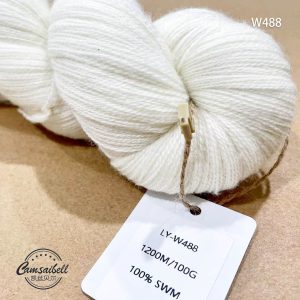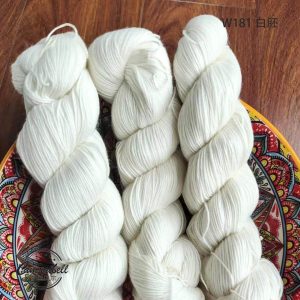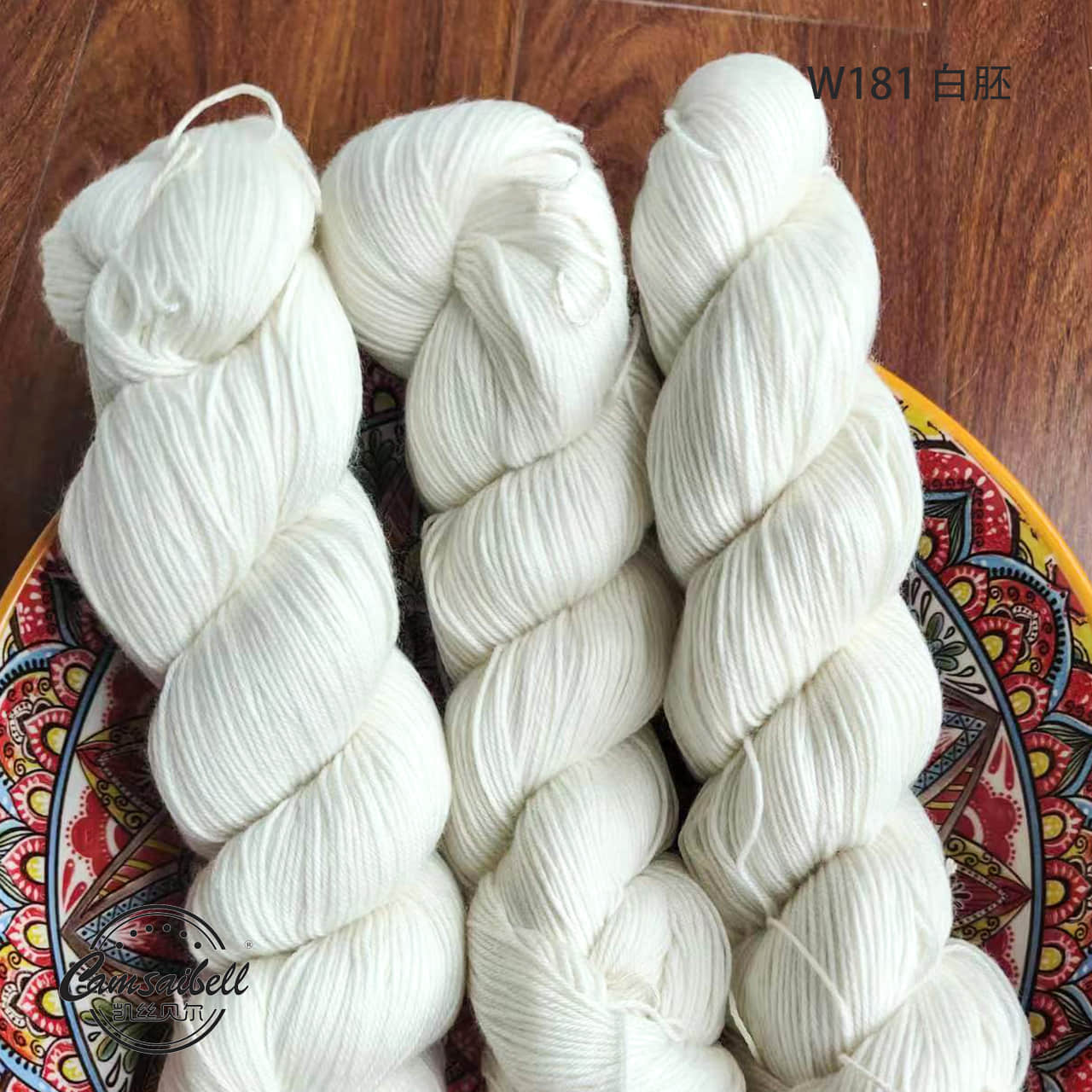Pflanzengefärbtes Garn is becoming a new favorite in the field of textiles and handicrafts, and it is also the preferred material for more and more people. This natural dyeing method not only gives the yarn a unique color, but also provides new possibilities for environmentally friendly fashion. In addition, plant dyed yarn is easy to maintain and durable. Next, we will give you a comprehensive introduction from the perspectives of the characteristics, advantages, uses, prices, selection and maintenance methods of plant dyed yarn to help you better understand this green material.

What is plant dyed yarn?
plant dyed yarn refers to yarn made by dyeing natural fibers with natural plant dyes (such as leaves, flowers, fruits, roots, bark, etc.). This process avoids the use of chemical dyes, is more environmentally friendly, safe, and full of natural beauty.
Common sources of plant dyes include:
Madder root: red tone
Indigo plant: blue series
Gardenia/turmeric: yellow series
Onion skin/tea leaves: brown series
Features of plant dyed yarn
Natural and environmentally friendly: using plant-based dyes, no chemical additives
Soft colors: presenting natural, non-industrial tones, with a “sense of time” and artistic texture
Safe and hypoallergenic: no irritating ingredients, suitable for baby products and sensitive skin
Natural color difference in each batch: due to differences in raw materials, presenting unique batch differences, full of personality
Compatible with natural fibers: suitable for natural fibers such as cotton, linen, silk, wool, etc.
Advantages of plant dyed yarn
Green and pollution-free: friendly to the human body and the environment, degradable;
High aesthetic value: natural and soft colors, unique oriental aesthetic temperament;
Strong artistry: suitable for limited edition handicrafts and cultural and creative products;
Meet sustainable standards: can pass international certifications such as GOTS and organic cotton;
Cultural inheritance: carrying traditional hand-dyed and weaving techniques, with collection and research value

Main uses of plant dyed yarn
Fashion clothing: natural style, literary style, environmental theme clothing, custom clothing
Baby products: safe and non-toxic, suitable for baby sweaters, scarves, hats and other personal items
Home fabrics: blankets, cushions, scarves, curtains and other natural fabric decorations
Weaving and handicrafts: hand knitting, crochet projects, cultural and creative gifts and environmental accessories
Sustainable brands: used for environmental concept product promotion and limited series
Price range of vegetable dyed yarn
| Yarn Type | Estimated Price Range (USD / 100g) | Notes |
| Cotton plant dyed yarn | $6 – $12 | Soft, breathable, ideal for babywear |
| Wool plant dyed yarn | $10 – $18 | Warmth and elasticity, suitable for winter |
| Linen plant dyed yarn | $8 – $15 | Crisp texture, best for home textiles |
| Silk plant dyed yarn | $15 – $30 | Luxurious, used for scarves and garments |
Note:Prices vary based on dye type, origin, and production scale.
Comparative analysis of plant dyed yarn and other yarns
| Aspect | plant dyed yarn | Chemically Dyed Yarn | Synthetic Fiber Yarn |
| Dye Source | Natural plant-based pigments | Synthetic dyes (petroleum-based) | Pigments in polymer extrusion |
| Environmental Impact | High eco-friendliness, biodegradable | Medium – needs wastewater treatment | Low – non-biodegradable, pollutive |
| Skin Safety | Excellent – hypoallergenic | Varies – depends on residue | Poor – possible irritation |
| Color Palette | Soft, earthy, unique variations | Wide, vibrant, mass reproducible | Bright, bold, but synthetic feel |
| Artistic Value | High – artisanal, craft-heritage | Low – industrial | Low – mass-produced |
| Price Level | Medium to high | Low to medium | Low – mass volume |
Market share of plant dyed yarn in recent years

The above figure shows the changing trend of the global market share of plant dyed yarn from 2020 to 2025. It can be seen that with the improvement of environmental awareness and the growth of green consumption, the market share of plant dyed yarn continues to grow, and it is expected to reach more than 8% in 2025.
How to choose plant dyed yarn
Confirm the raw materials: give priority to natural fibers, such as organic cotton, handmade wool, etc.;
Check the source of dyes: “natural plant dye” or GOTS certification with clear markings is more reliable;
Experience the feel and color: natural dyeing feels warm and the color is not industrially bright;
Pay attention to environmental certification: GOTS, OEKO-TEX, Ecocert are industry authorities;
Choose thickness according to the purpose: for example, choose fine yarn for baby clothes and coarse yarn for household items;
Beware of pseudo-natural dyeing: some yarns claiming to be “plant-dyed” are actually chemically synthesized and mixed, and the authenticity needs to be distinguished.
Tips for maintaining plant dyed yarns
Mainly hand wash: wash gently with cold water to avoid soaking for too long;
Use natural detergents: avoid chemical detergents to prolong the color;
Store in the shade: avoid exposure to the sun or drying to prevent the color from lightening;
Color separation cleaning: wash light and dark separately to prevent the transfer of natural dyes;
Regular ventilation and mildew prevention: pay attention to the yarn storage environment, especially in humid seasons.
Schlussfolgerung:
With the increase of environmental awareness, consumers pay more attention to health and sustainability. Plant-dyed yarns gradually stand out. Plant-dyed yarns not only integrate natural dyeing and weaving culture with modern environmental protection concepts, but also meet people’s pursuit of high-quality lifestyles. Whether you are a knitting enthusiast, designer, maternal and child brand or sustainable e-commerce brand, it can build a bridge for you to the triple values of nature, art and responsibility. Choosing plant-dyed yarns is not just choosing yarns, but also an attitude towards lifestyle.





